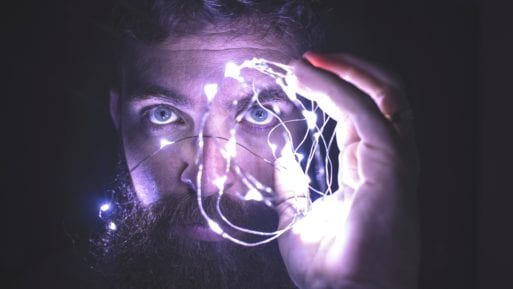
Credit: David Cassolato
About 10 percent of the global population has had a valid near-death experience, according to new research from Copenhagen University Hospital. Neurologists Daniel Kondziella and Markus Harboe Olsen also found that such experiences are more common among individuals who experience abnormalities during REM sleep.
Kondziella and Olsen surveyed 1,034 adults from 35 countries, and found that the frequency of NDEs was not influenced by age, gender, place of residence or employment status. They were also equally likely to occur in situations that were truly life-threatening and those that simply felt that way. Respondents who reported NDEs cited numerous commonalities – such as time speeding up or slowing down, exceptionally vivid sensations, and the feeling of being separated from their bodies.
But individuals who reported NDEs that rated higher on the Greyson Near-Death Experiences Scale were also more likely to report REM sleep abnormalities such as audio and visual hallucinations or sleep paralysis, the survey found. Such experiences can occur when REM sleep, in which people are dreaming but their muscles are paralyzed, blends with the waking state — often leaving people terrified.
As a result, Kondziella and Olsen suggest that NDEs are the result of neural activity in the brain, including the “sudden onset of REM sleep-like features.” They presented their findings on June 29 at the European Academy of Neurology Congress in Oslo, Norway, but the research has yet to be published in a peer-reviewed journal.
Questions About NDEs Remain
Other scientists say that the survey leaves many questions unanswered. Dr. Sam Parnia, director of Critical Care & Resuscitation Research at NYU Langone Health, published a 2014 study in the journal “Resuscitation” which found that about 2 percent of people who experienced cardiac arrest could, despite the fact that their heart had stopped, remember what was happening around them.

Daniel Kondziella
Credit: Capio CFR.
Parnia told Live Science that the link between REM sleep disorders and NDEs doesn’t prove cause and effect, and fails to explain why some people can recall such experiences during a time when their brain isn’t functioning, such as cardiac arrest.
“These refer to consciousness even when the brain doesn’t work, which is a paradox,” he said.
In Parnia’s book, “Erasing Death,” which SevenPonds reviewed in 2013, Parnia stated that “the fact that patients can live through an episode of clinical death and recover with in-tact [sic] mental abilities is a possible argument that consciousness interacts with, but exists outside of, the brain itself.”
While much ambiguity remains, scientific efforts to shed light on this poorly understood, yet highly prevalent, experience continue to provide fascinating insight into some of life’s biggest questions.

 New Research Ties Near-Death Experiences to REM Sleep
New Research Ties Near-Death Experiences to REM Sleep


 “Other Side” Documentary Directed by Carter Oakley and Heather Hogan
“Other Side” Documentary Directed by Carter Oakley and Heather Hogan
















